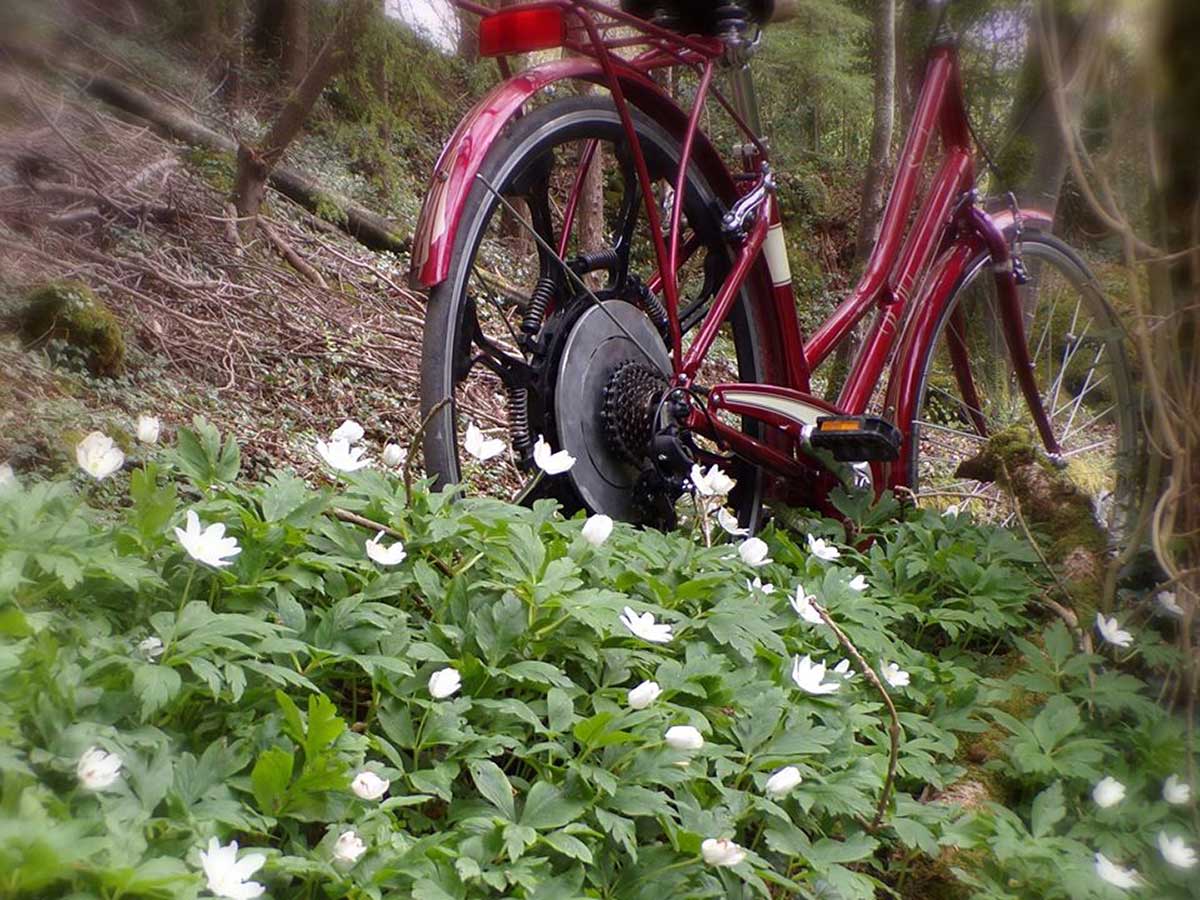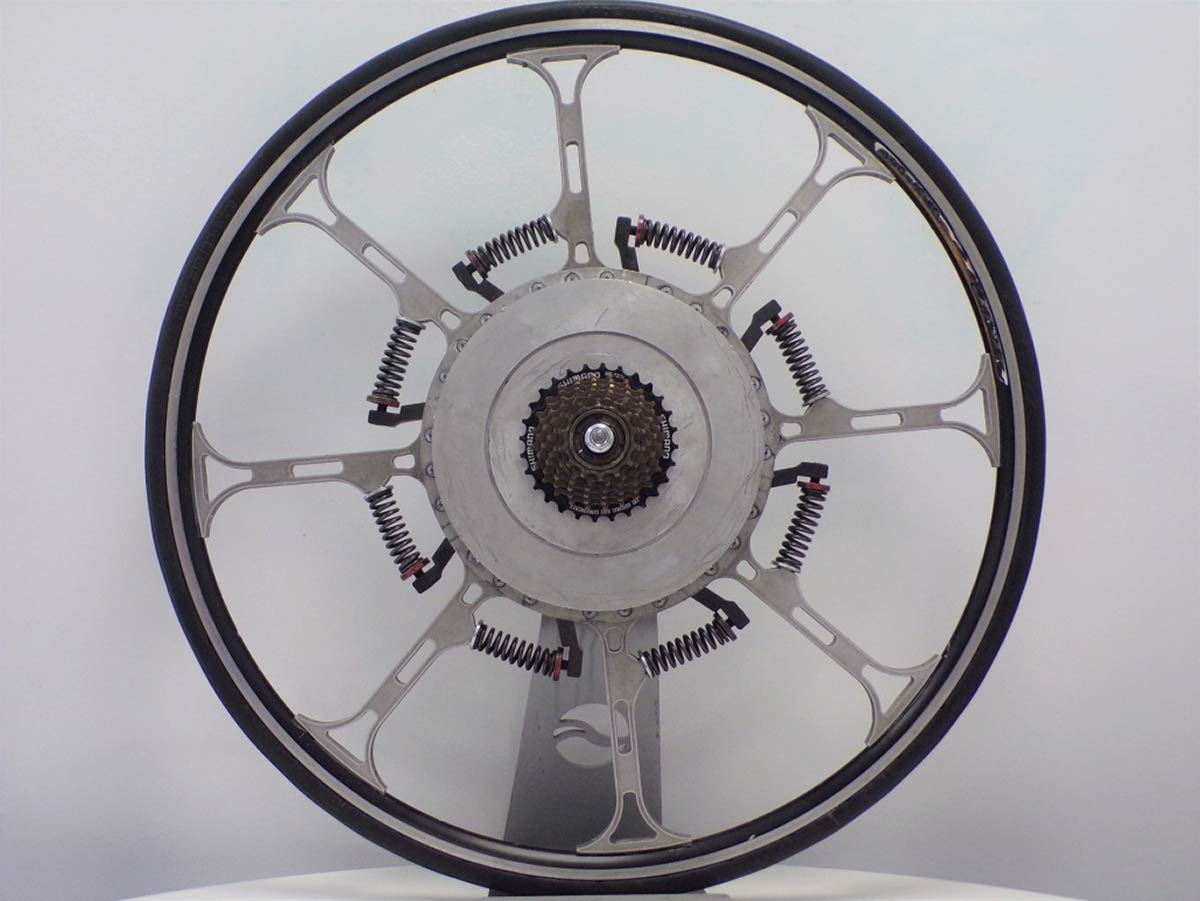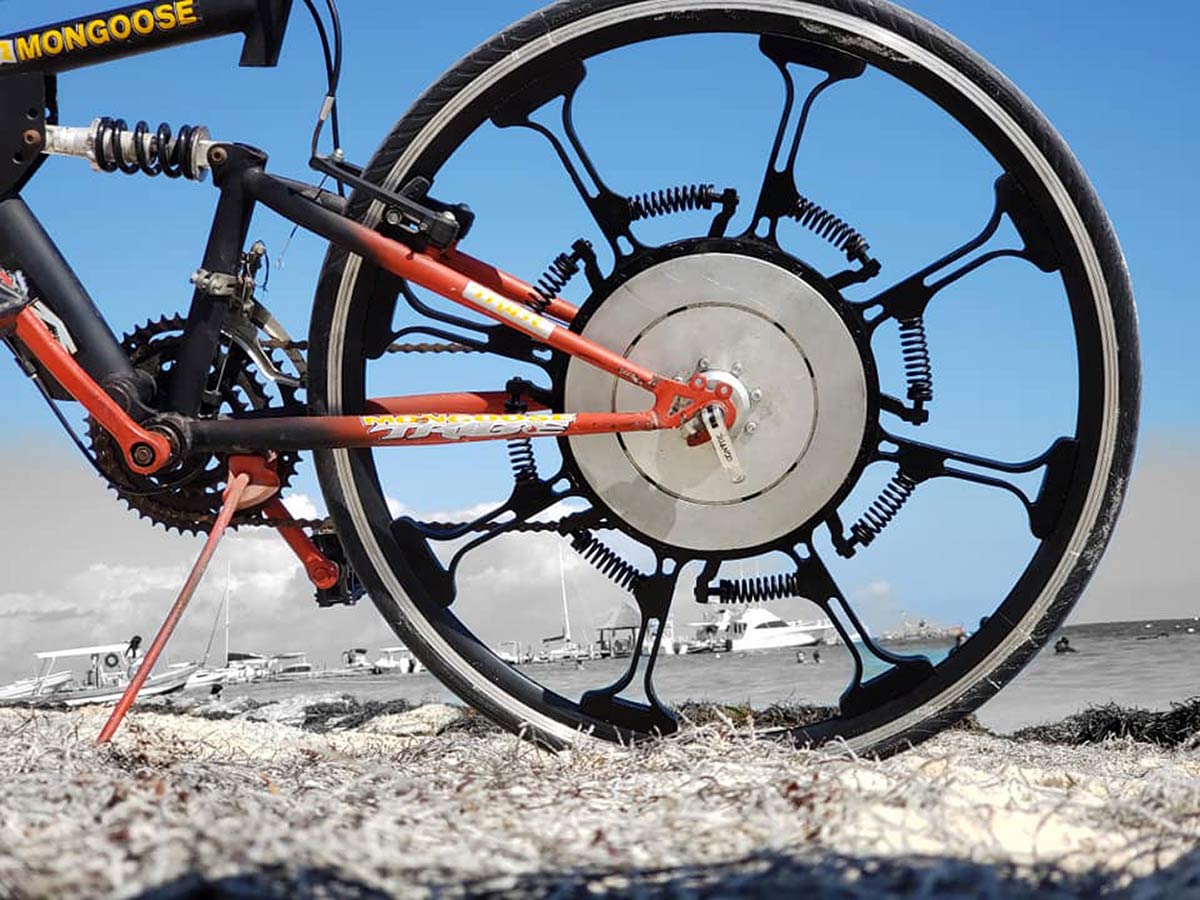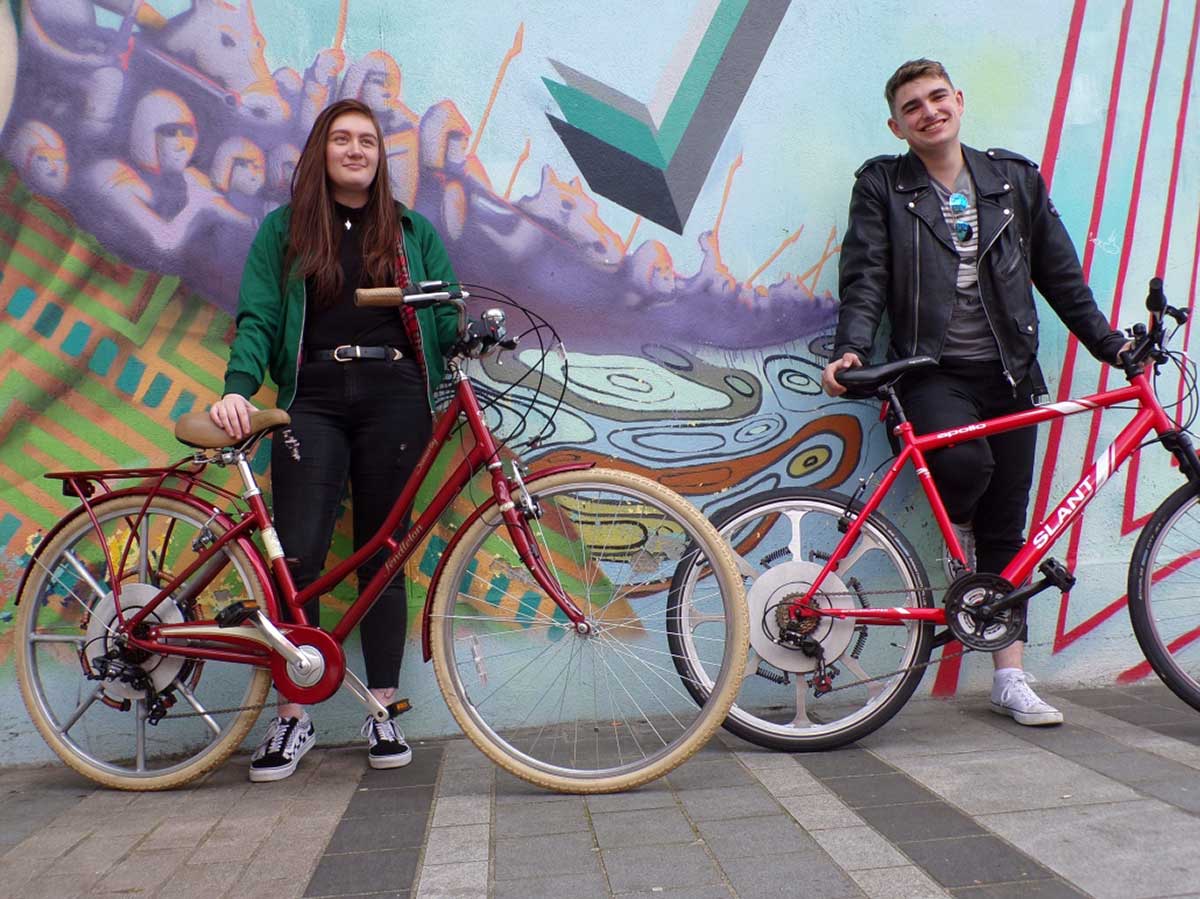Ireland-based Super Wheel System have released their spring-powered Forciclette. Pitted as an alternative to the e-bike, the Super Wheel Forciclette utilizes the rider’s weight converting it into forward propulsion of the bicycle for claimed efficiency gains of up to 30%. Here’s what we know so far.
Super Wheel Forciclette
“Take a look at this video, and with a little imagination, you will find this is basically… a simple idea” – Super Wheel System Website.
The Super Wheel Forciclette uses their patented “Weight (mass) to energy conversion technology” to improve cycling efficiency. It relies solely on human power but with 30% efficiency gains, founder Simon Chan is marketing the Forciclette as an e-bike alternative.
Details on the Super Wheel concept are very thin on the ground. The technology is said to be borrowed from that used on car wheels. The Forciclette design has two key components; the eight spring external mechanism, and the internal drive.
The rider’s weight has the effect of compressing the springs at the top of the wheel. As the wheel rotates forward, those springs decompress as they reach the bottom, then compress again as they rotate back to the top. This is where the free energy is coming from. It is stored in the springs under the rider’s weight and as the wheel rolls forward, that energy is released and converted to forward propulsion.
How exactly the external spring mechanism is configured with the internal drive mechanism, we simply cannot tell so will refrain from hypothesizing.
An e-bike alternative?
With no battery to worry about, range of any bike fitted with the Super Wheel System is unlimited. Noted: The range of a traditional bike is only limited by the rider’s enthusiasm and athletic prowess. But let’s be honest, those efficiency gains are an attractive concept for any rider.

The guys at Super Wheel aren’t stopping at 30%, however. They are developing the concept further with the ultimate aim of offering 50% efficiency gains over a traditional rear wheel.
Pricing & Availability
The Forciclette wheel is available for pre-order now at a price of €395,00. Two options are available; one for riders under 75kg and another for riders over 75kg.



